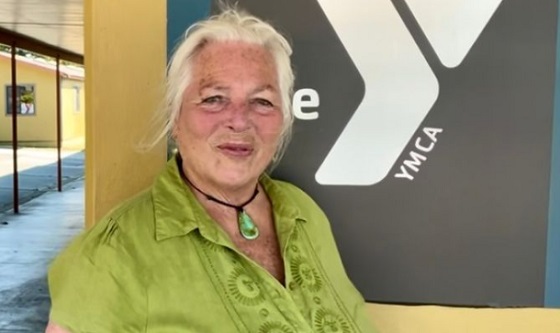Opinion
Premier Scientific Journal Nature Takes on ‘Climate of Fear’ Surrounding Research on Sex and Genr

From Heartland Daily News
“These articles are using phrases like ‘a person’s sex assigned at birth’. I find that phrase amusing. I don’t think sex is assigned at birth. Biological sex is a fact. It’s not assigned. It’s observed.”
Nature, one of the world’s premier scientific journals, has acknowledged the importance of studying sex and gender differences and officially denounced the “climate of fear and reticence” that is stymying research on the topic.
To that end, the journal in May launched “a collection of opinion articles” on the topic to be published over the coming months to foster honest and courageous discussions on a topic that many scientists shy away from due to fears of professional and personal repercussions.
“Some scientists have been warned off studying sex differences by colleagues. Others, who are already working on sex or gender-related topics, are hesitant to publish their views,” read the editorial introducing the series.
“…In time, we hope this collection will help to shape research, and provide a reference point for moderating often-intemperate debates.”
Headlines that kicked off the series include “Neglecting sex and gender in research is a public-health risk,” “Male–female comparisons are powerful in biomedical research” and “Heed lessons from past studies involving transgender people: first, do no harm.”
What the collection of articles represents and whether it will ease tensions surrounding this area of research remains to be seen.
Jeffrey Mogil, a neuroscientist and pain researcher at Mcgill University, as well as the co-author of one of the articles in Nature’s sex and gender series, told The College Fix there is an effort underway in biological research to do away with or minimize the importance of the concept of sex and sex as a binary variable.
This is problematic, Mogil said in a recent telephone interview, because sex in mammals is “either binary or it rounds to binary and in doing so it always has been useful and continues to be and any conception of it that isn’t binary would then impose practical difficulties on how science is done.”
Moreover, he noted, discarding the notion of binary sex in mammals would set back important advancements in how many biomedical researchers now do their work.
“There are sex differences in all kinds of traits that we’re interested in and where we didn’t know they existed,” Mogil said. “The reason we didn’t know they existed [is] because until extremely recently, essentially all biology pre-clinical experiments were done with males only.”
“Since regulatory agencies, funding agencies, have demanded that people start using both sexes [in research],” he said, “lo and behold, we’re finding sex differences.”
“We’re finding that what we thought was the biology of a thing was only the biology of the thing in males and the female biology is completely different,” he added.
“This is in our minds,” he said, “an incredible scientific advance and that advance is at risk of stopping and reverting if, you know, people start to believe…dividing animals into males and females is inappropriate.”
Although Mogil stated he did not know how Nature made editorial decisions regarding the selection of articles for their sex and gender collection, he said that he felt the article he and his co-authors wrote was intended to defend the status quo against those “advocating…either that gender is much more important than sex or that sex is more complicated than people have made it seem.”
The College Fix reached out to a senior communications manager from Springer Nature in early June regarding the selection process for the series, as well as how sex was presented in some of the other commentaries, but did not receive a response.
Daniel Barbash, a professor of molecular biology and genetics at Cornell University, was more skeptical than Mogil of Nature’s sex and gender op-ed collection when he spoke to The College Fix in a late-May phone interview.
Although he said he generally held a positive view of the article Mogil co-authored and appreciated that it explicitly stated “there are only two sex categories in mammals,” he noted that he also felt the authors of other commentaries in the series were to some extent “further conflating sex and gender.”
“There’s little things that sometimes give the game away,” he said. “These articles are using phrases like ‘a person’s sex assigned at birth’. I find that phrase amusing. I don’t think sex is assigned at birth. Biological sex is a fact. It’s not assigned. It’s observed.”
“[For] the vast majority of humans, from the moment they’re born,” he said, “there is zero ambiguity whether they’re a male or a female.”
Furthermore, the “overall tone” of the collection, Barbash said, was that “there needs to be more research on gender variation and that there is more complexity to biological sex than a binary.”
According to Barbash, neither of these notions are “universally accepted” among biologists.
He said he believes the series has “the potential to drive funding agencies and other agencies that are involved in the intersection between politics and research in a particular direction that I don’t think would always be helpful.”
“I don’t think any serious biologist would deny that sex is a hugely important factor in both basic research and in biomedical research,” said Barbash. “Of course, any study on the effect of drugs should be tested separately in males and females, otherwise it’s a hugely confounding factor if you ignore that.”
Yet, he said, “the notion that we need to do the same thing for gender…is really not supported,” and may not be very feasible.
“Half the population is male and half the population is female,” Barbash said. “We see all kinds of estimates for gender nonconforming and transgender individuals but, no doubt, they’re much less frequent than males and females.”
On account of this, he said, even if research questions regarding gender divergence and transgender individuals are worthwhile, “it would be problematic, for example, to necessitate that all NIH studies of humans include males, females and gender nonconforming individuals or transgender individuals.”
However, he said, he feared “this series of articles could have that kind of impact in influencing policy.”
Originally published by The College Fix. Republished with permission.
International
Woman wins settlement after YMCA banned her for complaining about man in girls’ locker room

From LifeSiteNews
Julie Jaman will receive $65,000 as part of the settlement after being banned from a local swimming pool for objecting to a man in a female shower with little girls present
A Washington State grandmother won a $65,000 settlement from the City of Port Townsend and the Olympic Peninsula YMCA after she was banned from a swimming pool for objecting to a cross-dressing man watching small girls change clothes.
As covered by LifeSiteNews in 2022, Julie Jaman testified before the Port Townsend City Council about her experience showering in the local pool’s facilities when she heard “a man’s voice in the women’s dressing area.” When she investigated, she said that she saw “a man in a women’s swimsuit, watching little girls pull down their bathing suits in order to use the toilets in the dressing room.”
She also told a local newspaper, “There were gaps in the curtain and there I was, naked, with soap and water on me, and this guy, right there very close to me. I asked, ‘Do you have a penis?’ He said, ‘That’s none of your business.’ That’s when I told him, ‘Get out of here, right now.” She appealed to a nearby female manager, who she says replied, “you’re discriminating and you can’t use the pool anymore and I’m calling the police.”
After speaking to police and reviewing police reports, the Port Townsend FreePress reported that Jaman had an “emotional response to a strange male being in the bathroom and helping a young girl take off her bathing suit,” and was described as “screaming” by a complainant.
“In an effort by the city and the YMCA to apply the neo-cultural gender rules at Mountain View Pool dressing, shower room facilities, women and children are being put at risk,” Jaman declared at the time.
A YMCA marketing and communications manager responded at the time by disputing her version of events, claiming the male was not “engaging” with the young girls but was simply escorting them to the dressing room, and that the confrontation was just one in a series of many that led to her ban.
She sued, however, and on June 30 the group representing her, the Center for American Liberty (CAL), announced that the city and the YMCA chapter had agreed to a $65,000 settlement, which also provides that the city will “remove certain information about Ms. Jaman from its website, further underscoring the baselessness of the actions taken against her.”
“This case was never just about one woman being banned from a publicly owned pool, it was about the fundamental right of every American to speak truth without fear of retaliation,” said Mark Trammell, CEO of CAL. “Julie Jaman bravely stood her ground, endured attacks on her character, and today’s settlement affirms that government officials cannot silence dissenting voices through intimidation or retribution.”
“I never imagined that expressing concerns about the safety and privacy of women and girls would lead to me being shunned and banned,” Jaman added. “I’m grateful that justice has been served and that my voice was heard. This is a victory for common sense, women’s rights, and the right to speak the truth.”
Despite being demanded by LGBT activists as a matter of “fairness,” policies forcing girls to share intimate facilities such as bathrooms, showers, or changing areas with males who “identify” as the opposite sex violates their privacy rights, subjects them to needless emotional stress, and gives potential male predators a viable pretext to enter female bathrooms or lockers by simply claiming transgender status.
Opinion
Blind to the Left: Canada’s Counter-Extremism Failure Leaves Neo-Marxist and Islamist Threats Unchecked

By Ian Bradbury
Incidents like the 2022 Coastal GasLink attack, the December 2023 Ottawa plot against Jewish events and the January 2024 Edmonton City Hall attack underscore the stakes, yet they fade from public discourse without rigorous analysis. This is not mere oversight—it is a systemic failure of Canada’s counter-radicalization and extremism frameworks and media, exposing the nation to risks from under-assessed threats.
In June 2025, a former British Columbia civil liberties leader—forced to resign in 2021 for rhetoric deemed too extreme even by the province’s NDP government—re-emerged to lead a protest outside the Canada Border Services Agency offices in Vancouver. Her earlier praise of Hamas attackers’ hang-glider tactics as “beautiful” and her call to “burn it all down” amid the 2021 church arsons across Canada raise a critical question: Is this the sign of a deeper ideological current gaining momentum beneath the surface?
Canada faces a mounting crisis of radicalization and extremism, yet its citizens remain largely uninformed or, worse, misinformed.
Despite tens of millions invested in counter-radicalization over the past decade, threats from extremist elements within the Pro-Palestinian movement, the “Hands Off Iran” protests, and left-wing extremism receive insufficient scrutiny.
The “Hands Off Iran” demonstrations on June 22, 2025, which rallied hundreds in support of the Iranian regime—planned before U.S. strikes on Iranian nuclear facilities and organized by many of the same protest groups active since October 7, 2023—highlight this neglect.
The absence of detailed reporting obscures their scope and significance. Incidents like the January 2024 Edmonton City Hall attack and the December 2023 Ottawa plot against Jewish events underscore the stakes, yet they fade from public discourse without rigorous analysis.
This is not mere oversight—it is a systemic failure of Canada’s counter-radicalization and extremism frameworks and media, exposing the nation to risks from under-assessed threats.
Under-assessed Threats in Plain Sight
Pro-Palestinian rallies in Vancouver, Toronto, Ottawa, and Montreal reveal this gap. Flags of Hamas and Hezbollah—designated terrorist groups in Canada—have been displayed openly, and chants of “Death to Canada”, “Death to America”, and “Death to Israel, Death to Jews” have been reported, yet government-funded organizations offer no in-depth analysis of the radical networks or rhetoric tied to these events.
The “Hands Off Iran” protests face the same silence. Where are the detailed reports dissecting these movements? Where are the network maps or guides to their flags, symbols, and rhetoric, as seen for far-right groups?
Similarly, Left-wing accelerationism, an neo-marxist ideology advocating violent societal collapse, has fueled incidents like the 2022 Coastal GasLink attack, the 2021 church arsons, and anti-colonial criminal acts, yet it is overshadowed and downplayed by coverage of far-right threats, such as militant “right-wing accelerationism”. Two cases illustrate the broad urgency: the Edmonton attack, involving gunfire and a Molotov cocktail, included a video supporting Palestine and condemning Israel’s actions in Gaza, but was downplayed as “salad-bar extremism.”
The Ottawa plot, inspired by Islamic extremism and the Israel-Palestine conflict, vanished from headlines with alarming speed. These incidents demand thorough investigation, not dismissal.
A Counter-Radicalization Industry Misaligned
Canada’s counter-radicalization efforts fail to address the full spectrum of threats. Organizations such as the Canadian Centre for the Prevention of Radicalization Leading to Violence and the Canadian Anti-Hate Network (an organization linked to the extremist decentralized Antifa movement) focus heavily on far-right extremism and limited Islamic threats (e.g., ISIS and Al-Qaeda), while sidelining left-wing extremism, accelerationism, anarchist extremism, and broader Islamic extremism.
Despite Canada’s 2024 designations of the IRGC and Samidoun as terrorist entities, these threats receive minimal attention compared to the detailed profiling of far-right networks in Canada. Detailed radicalization or extremist assessment reports on Edmonton or Ottawa? Virtually nonexistent. Further compounding the challenge, Canada’s reliance on foreign groups like the UK’s ICSR, ISD, Moonshot, or Meta’s GIFCT—partly funded by Canadian taxpayers—skews focus away from nuanced, Canada centered, counter-radicalization and extremism priorities.
Certain initiatives, such as Moonshot’s redirect program, which was found to have directed individuals vulnerable to right-wing radicalization to curated content from an anarchist and convicted human trafficker with ties to Russian organized crime, likely exacerbated rather than mitigated the risks it intended to reduce. This prompts a critical question: Why does Canada entrust so much of its counter-radicalization and extremism initiatives to external entities that are unaccountable to its citizens?
Media coverage only compounds the problem.
The Edmonton attack’s Palestine-linked video was buried under vague labeling, and the Ottawa plot faded without follow-up. Extremist symbols at rallies are treated as backdrop, unlike the 2022 convoy protests, which prompted detailed government-funded analyses of symbols, rhetoric, and networks, that were amplified by media.
Exacerbating the challenges, Public Safety Canada’s Listed Terrorist Entities page lists groups but lacks guides to their symbols, terms, or networks, leaving Canadians ill-equipped to identify threats. This is not journalism or governance—it is a failure to connect evident and observable dots.
CSIS and the RCMP have raised alarms about Iranian- and Palestinian-linked threats, in addition to Israeli Deputy Foreign Minister Sharren Haskel’s claim of hundreds of IRGC operatives active in Canada. The 2024 designations of the IRGC, linked to Hamas, Hezbollah, and the Houthis, and Samidoun, tied to Palestinian extremism, confirm these risks. CSIS has flagged Iranian-backed influence networks, and the RCMP thwarted plots like the Ottawa conspiracy.
Yet, these warnings rarely translate into robust public understanding, leaving Canadians vulnerable to acknowledged and observable threats.
A Path Forward: Immediate Accountability
The U.S. bombardment of Iranian nuclear sites has heightened these risks, with reports of Iranian sleeper cells in North America adding urgency. Canada must act swiftly to address all threats—left-wing, Islamic, and far-right—with equal rigor.
Detailed, unclassified reports on incidents like Edmonton and Ottawa, alongside network analyses of domestic protest and disruption movements, must become standard. Furthermore, Public Safety Canada should enhance its Listed Terrorist Entities page with guides to symbols, flags, rhetoric, and networks, drawing on allied nations’ open-source models for rapid implementation. Federal funding for counter-radicalization groups must mandate balanced, actionable reporting across all threats, verified through regular audits.
Canada’s skewed approach to extremism is a profound national security vulnerability. Left-wing extremism and accelerationism, pervasive Islamic extremism, and attacks on Jewish institutions fester unaddressed, while rallies including support for listed terrorist groups evade scrutiny.
The counter-radicalization sector, media, and government share responsibility for this dangerous oversight. As global tensions rise and domestic risks evolve, the cost of inaction grows steeper, leaving Canada vulnerable to the next strike. What message does Canada send by prioritizing some threats while overlooking others that are active and evident?
And what will the reckoning be when a skilled attacker, emboldened by this neglect, slips through the cracks?
The Bureau is a reader-supported publication.
To receive new posts and support my work, consider becoming a free or paid subscriber.
Invite your friends and earn rewards
-

 Crime2 days ago
Crime2 days agoNational Health Care Fraud Takedown Results in 324 Defendants Charged in Connection with Over $14.6 Billion in Alleged Fraud
-

 Health2 days ago
Health2 days agoRFK Jr. Unloads Disturbing Vaccine Secrets on Tucker—And Surprises Everyone on Trump
-

 Business1 day ago
Business1 day agoElon Musk slams Trump’s ‘Big Beautiful Bill,’ calls for new political party
-

 Business16 hours ago
Business16 hours agoWhy it’s time to repeal the oil tanker ban on B.C.’s north coast
-

 Censorship Industrial Complex1 day ago
Censorship Industrial Complex1 day agoGlobal media alliance colluded with foreign nations to crush free speech in America: House report
-

 International23 hours ago
International23 hours agoCBS settles with Trump over doctored 60 Minutes Harris interview
-

 Business16 hours ago
Business16 hours agoLatest shakedown attempt by Canada Post underscores need for privatization
-

 Energy15 hours ago
Energy15 hours agoIf Canada Wants to be the World’s Energy Partner, We Need to Act Like It







